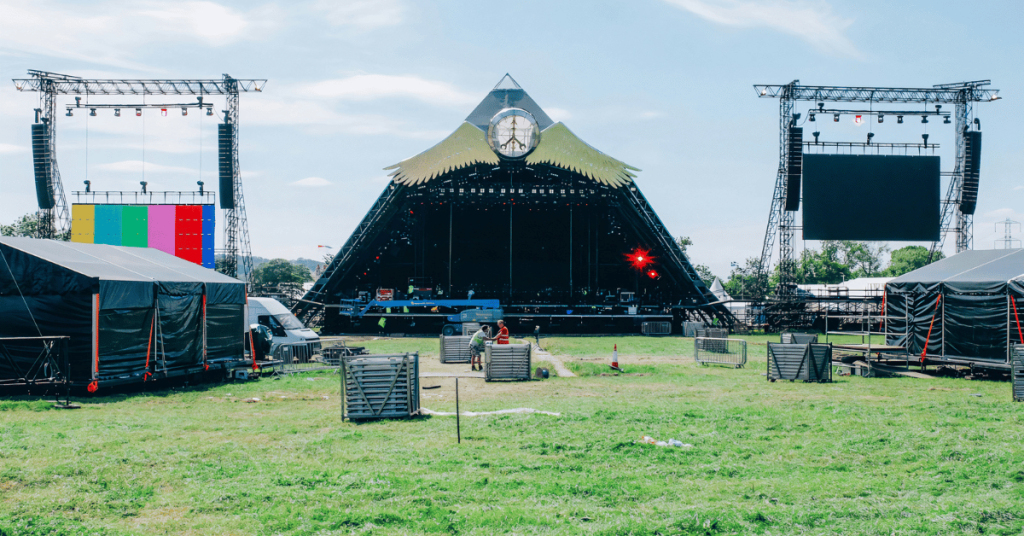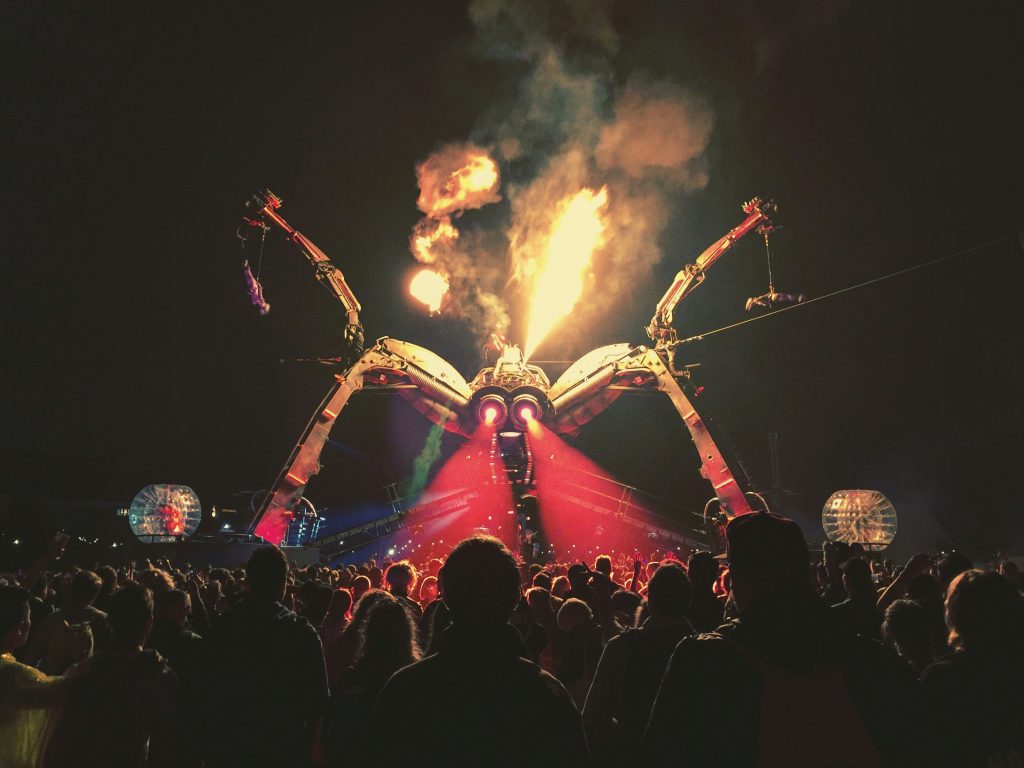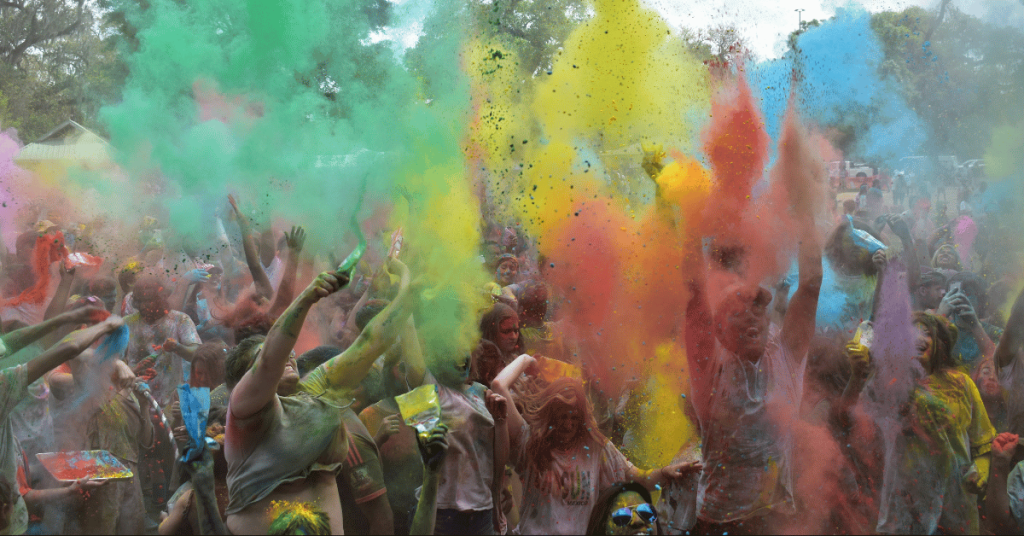‘Hello London!’
Fergie of Black-Eyed Peas fame (not appreciating the sovereign state of Somerset)
Dig out your wellies, your flags and pack plenty of paracetamol, it’s Glastonbury Festival time! The world’s biggest, best and most unique festival is back to brighten all of our summers. Yes, even those of us who tried and failed (again) to get tickets, can enjoy the magnificent BBC coverage which will be bigger and better than ever before.
Since the first televised coverage of Glastonbury in 1994, millions of us who have been unable to attend in person have enjoyed the Glastonbury delights from the comfort of our own homes. It’s become an annual television event to rival Wimbledon, Eurovision, and the final of Strictly (Bobbi and Diane were robbed!). I need to ask, however, are wellies allowed on the sofa?
This year it will also have the Olympics and Euro24 to compete with. But, with 5 days of action across 62 stages and over 3000 acts, how do the BBC approach, capture and broadcast this into our homes? We thought we’d take a look and BBsee. But before that, let’s explore what’s happening in 2024 and what makes Glastonbury so special.

The Glastonbury 2024 Line-Up
So, who is in the line-up at Glastonbury Festival 2024? As we’ll discuss later, the headliners aren’t really the biggest deal once you’re there. At this stage, people just love arguing/moaning about the quality/commercialisation of the headliners – and who are we to argue/moan about that.
The Pyramid Stage this year sees the debut of Missouri-born singer SZA, a second festival appearance for pop-sensation Dua Lipa, and a record-breaking 100th headline act (OK, it’s actually 5th) from Coldplay.
Meanwhile on The Other Stage, Bristol-based Idles will generate plenty of West-country support and are definitely my tip to be a must-see for festival-goers and those watching at home. If you don’t know Idles, they’re a unique mix of love, rage, and social justice – the perfect mix for Glastonbury.
This year’s “Legends” slot may not impress me much, but Shania Twain will surely enjoy one of the largest and most-sing-a-long-y crowds of 2024. The Legends choice is usually the crowd pleaser at Glasto, providing a welcome change of pace (and hangover cure) on a sleepy Sunday afternoon. Previous legends have included Paul Simon, Kylie, Diana Ross and (ahem) Rolf Harris.
But enough of this SEO-friendly content, let’s move on to what makes Glastonbury so unique.
What can I do at Glastonbury Festival 2024?
“It’s not about the music man”
Yes, there are more stages at Glastonbury than you could ever actually visit, and such a wide and diverse selection of acts that literally ANYONE in the world could find something they like, and yes, there are always huge headliners and the best bands, but…
…once you’re there, it actually isn’t about the music.
The real magic of Glastonbury comes not from the Pyramid Stage with its Rock n Roll Hall of Famers and World-Tourers, it comes from the variety of amazing, unforgettable and quite frankly ridiculous things you can see and do elsewhere.
From fire-breathing metal dragons to life-size ghost pirate ships sailing over people’s heads (this did actually happen, and no I wasn’t hallucinating). From peaceful contemplation in the Hare Krishna tent, to walking through post-apocalyptic New York on your way to watch CBeebies Live, it is a mad, wonderful, life-changing experience that no other festival comes close to.

To put this in perspective, at my first ever Glastonbury in 1999, I met a man who claimed to have been to every Glastonbury since 1982 and he’d NEVER seen a band. Not a single one. Writing this makes it sound like a lie, but once you’re there you can easily believe it.
It actually makes perfect sense.
What is the history of Glastonbury Festival?
Just as we all grow and evolve as the years pass (why can’t I sit down without making old-man-huffing noises?), Glastonbury has certainly changed since it first opened its cattle-grids to 1500 visitors in 1970 as the Pilton Pop, Folk and Blues Festival.
Legend has it that founder Michael Eavis only started the festival as a means to quickly pay-off his overdraft – perhaps a reason why it’s always been so popular with us students.
Glastonbury has evolved through it’s 70’s era of spiritualism and free-thinking, it’s 80’s period of social and political upheaval, and into its explosion of popularity, new stages and broadcast television in the 90’s.
The 90’s also became famous/infamous depending on your ticket-purchasing sensibilities, for the ease in which thousands of people were able to ‘jump the fence’ and gain entry for free. By the time 2001 rolled round, it was estimated that the 100,000 official festival numbers were tripled by fence-jumpers – without the infrastructure, water supplies and let’s face it, toilets, to cater for so many people.
After a less jumper-friendly fence was installed in 2002, the festival entered a new epoch as Michael Eavis’ daughter Emily became more involved. This ushered in the expansion of new areas and stages, more focus on global music and foods, and the beginning of the ‘popular’ approach.
Since 2010, the headliner strategy of the festival has been to secure the services of ‘pop’ acts rather than rock titans – think Beyonce, Adele and this year’s Dua Lipa. As the focus has shifted, so has the appeal and ‘vibe’ of the festival to a more middle-class audience.
Many long-time Glastonbury goers see this shift as a negative. The spiritualists and free-thinkers replaced by camping chairs and latte zones. Personally, I can see both sides of the argument, but I must admit that being asked to sit down at a raucous gig because people behind can’t see from their picnic blanket does not feel very Glastonbury.
On that sour note, lets now look at how you can enjoy the festival from the comfort of your own home (you could even put a picnic blanket down in your front room and get the Waitrose sandwiches out in peace).

How can I watch Glastonbury 2024?
The Revolution will be televised
Since watching Channel4’s amazing coverage of Glastonbury 1994’s Rage Against the Machine as an angsty teenager, I have been hooked to the TV broadcasting of the festival. Being transported to the front rows, mosh-pits, and dance-drops of the best acts in the world (who always save their best for the festival) is an absolute treat.
In the years before I was able to go in-person, I would be camped in front of the telly desperately imagining myself there. Then, once I was old enough to go with my mates, my parents would be ORDERED to record every second of it on VHS so I could watch it again on my dishevelled and smelly return. Even the bands I didn’t really like would be watched in full, on repeat until the tape wore out.
Now, with BBC’s interactive broadcast and iPlayer platform allowing you to pick and choose, switch mid-set, and travel between stages without having to walk past the queues for the toilets, it’s complete TV heaven. To sell the lie to myself that I could be there, I even plan out a watching schedule ahead of time – pretending I’m upset that White Stripes and Hot Chip are clashing so I need to decide which one to watch. Nerd much?
But, it seems that I’m not alone. Viewing figures are increasing year on year with the headliners peaking at over 4 million last year. But the real success story is the increase in digital audiences. In 2023 iPlayer figures increased by 116%, with BBC sounds increasing 205% over the previous 3 years.
But what goes into such a huge broadcasting extravaganza? Well, quite a lot actually.
There is over 40 hours of live TV coverage, over 85 hours of live radio coverage, plus all of the individual digital streams covering five different stages. Putting this on in a purpose-built state-of-the-art indoor venue would be impressive. But this is in Pilton! In a field!! With cows!!!
The BBC outside broadcast team arrive 2 weeks ahead of the event to build track ways, fencing, production offices and camera towers. They even have to build, lay, and install a full fibre network infrastructure to be able to transmit between the stages into the OB and editing operations.
This wouldn’t be too bad if they just had to do it once, but due to the land returning to farming territory after the festival, tractors and ploughs tend to ‘disturb’ the network somewhat. Diggers gonna dig. No diggitty, no doubt. Can they dig it, yes they can.
2023’s coverage also needed to expand to UHD delivery which, if everyone watched UHD would still be complicated. But with most viewers still using HD everything needs to be down-converted, re-graded, and re-delivered. But extra pixels are extra pixels so it’s worth it.
When watching the coverage, it always strikes me that they must have an endless amount of camera positions and operators, but in fact, the opposite is true. When compared to the camera coverage on sporting events, Glastonbury is relatively restrained. There is a total of 64 cameras used to cover the ENTIRE site, with the headline-fronting Pyramid Stage using a manageable 12 cameras. This may sound a lot compared to a wedding, but the smaller scale Champions League Final also uses 64 cameras just to cover the one pitch.
Of course, the BBC may introduce a few new positions and gadgets this year which will be interesting to look out for. But for me, even if they reverted to a single locked-off camera position of a single stage, I would still watch every second of it.
So thank you BBC for continuing to invest in and dedicate so much resource into Glastonbury Festival. Long may it continue.
Goodbye Norma Jean
Thank you for reading our Glasto Guide! To take advantage of our FREE video marketing audit, get in touch with Reels in Motion today.





